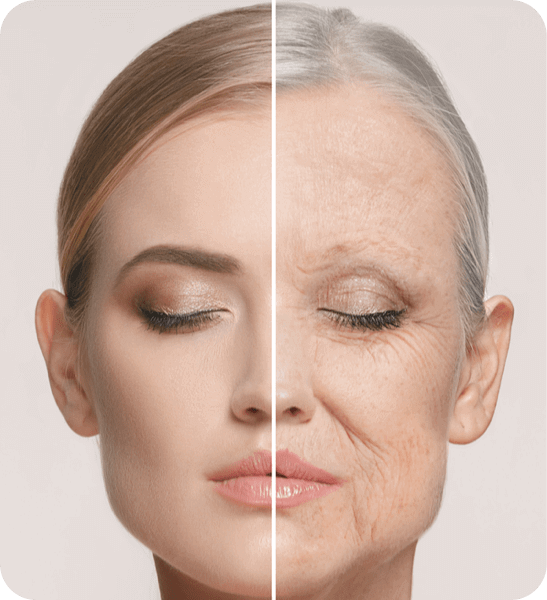Research Shows that Hyperbaric Oxygen Therapy Induces Neuroplacticity and Speeds Stroke Recovery

How Hyperbarics Helps
Induces neuroplasticity
Reduces inflammation
Mobilizes stem cells
Increases tissue oxygen delivery
Improves blood-brain barrier reactions
Up-regulates axon guidance agents
Increases levels of neutrophils & nitric oxide
Speeds recovery and rehabilitation
Enhances mitochondrial function (neurons & glial cells)
Stimulates angiogenesis & cell proliferation needed for axonal regeneration
What the Research Says
Hyperbaric Oxygen Therapy (HBOT) has been shown to activate neuroplasticity in chronic neurological deficiencies resulting from strokes. Neuroplasticity is the ability of the brain to form and reorganize synaptic connections.
When patients breathe oxygen under pressure (hyperbaric oxygen therapy), it increases oxygen tension in arteries and in the brain. It also facilitates the flow of oxygen dissolved directly in the blood across the blood-brain barrier. At the minimum then, it is reasonable to expect that HBOT can be an effective method of increasing oxygen to brain tissues, and evoking neuroplasticity, angiogenesis in non-active areas, and increased neuronal activity after a stroke.
For example, numerous studies have suggested that the oxygen supply to blood vessels in stroke-affected areas is severely restricted, leading to oxygen deficiency. Such decreased oxygen levels not only cause a reduction in neuronal activity, but also prevent angiogenesis, which would help replace the stroke-damaged blood vessels. It also prevents the generation of new synaptic connections. These studies stress the importance of a high oxygen supply to repair stunned regions of the brain. Several previous studies have also shown that an increase in dissolved oxygen has several beneficial effects in damaged brain tissues.
Research Studies
A Clinical Study on Ischemic Stroke
A Clinical Study on Ischemic Stroke
Clinical Effectiveness of stroke and TBI
Clinical Effectiveness of stroke and TBI
Retrospective analysis by Dr.Amir Hadanny
Retrospective analysis by Dr.Amir Hadanny
Hyperbaric oxygen and cerebral physiology
Hyperbaric oxygen and cerebral physiology
Rationale of Hyperbaric Oxygenation in Cerebral Vascular Insult
Rationale of Hyperbaric Oxygenation in Cerebral Vascular Insult
Ischaemic brain damage after stroke
Ischaemic brain damage after stroke
Patient Experiences
-

Amelia, 42
Had significant problems with her balance while walking.
Amelia, a 42 year old woman, had significant problems with her balance while walking. Two years after her stroke she had only been up to her bedroom upstairs once. And that was with someone standing walking next to steady her should she start to fall. So she had not slept in her own bed for two years. She lived and slept only on the main floor of the condo. After Hyperbaric oxygen treatments, she was able to navigate the stairs alone and slept in her own bed every night to her great pleasure and relief.
-

Henry, 81
Lost eyesight in his right eye, which returned during hyperbaric treatments.
Henry, an 81 year old man, came in to our clinic 8 years after his stroke. He had lost his eyesight in his right eye, which returned during his treatments. Additionally, his grandson had to translate what he was saying for us because his mumbling speech made it difficult to understand him. During HBOT his speech became clear enough so translations were no longer necessary.
-

Ming, 33
She regained the ability to recognize and remember faces after HBOT
Ming, a 33 year old woman, came with a fear of being around people, because she had lost her ability to recognize and remember faces. After treatment with hyperbaric oxygen therapy, she was so excited when she realized that she could remember our faces. It allowed her to feel safe and at ease in her normal day-to-day activities.
Physicians: Refer a Patient
You Submit Your Patient’s Information
We Get Authorizations
Patient Starts HBOT

Related articles
Research on Hyperbaric Oxygen Therapy
-
What is Hyperbaric Oxygen Therapy?
Hyperbaric oxygen therapy treats medical conditions with 100% oxygen in a pressurized hyperbaric chamber. The patient lies or sits in the chamber. The oxygen then saturates the plasma in the blood, allowing oxygen to easily flow throughout the body and reach even areas that are injured or diseased, which typically receive less oxygen. The mechanisms of hyperbaric oxygen therapy include stimulating and mobilizing stem cells, down-regulating inflammatory genes, up-regulating reproductive cells and stimulating DNA. HBOT also regrows tiny blood vessels, and stimulates the growth of new healthy cells in the brain, bones, skin, organs, and tissues. People seek hyperbaric oxygen therapy to heal physical damage in their bodies and to promoting health and anti-aging.
-
Does HBOT kill cancer cells?
Current research indicates that hyperbaric oxygen does not kill cancer cells. However, there has been a small amount of research indicating that hyperbaric oxygen might reduce the size of certain tumors. Also, there has been a study on mice using hyperbaric oxygen, along with a ketogenic diet, to reduce tumors. Hyperbaric oxygen causes many different healing modalities to kick into gear. Could its effect on strengthening the immune system inhibit the growth of cancer cells? Nobody knows. There are numerous studies conclusively showing that hyperbaric oxygen does not encourage cancer cells or tumors to grow. Some patients claim the hyperbaric oxygen makes them feel a lot more comfortable and functional after chemotherapy and also during healing. Note that some chemotherapy drugs are not to be used with hyperbaric oxygen, as the chemotherapy drugs can be enhanced and thus become toxic. A good hyperbaric oxygen facility (such as Bay Area Hyperbarics) will always call the chemotherapy manufacturer to ensure that hyperbaric oxygen therapy will be helpful and not damaging to the patient.
-
IWhat is the CPT code for HBOT?
The CPT code for HBOT is G0277.
-
Does Medicare cover HBOT?
Medicare covers Hyperbaric Oxygen Therapy for approved conditions, and many insurance companies also cover approved conditions. If your condition is not approved by your insurance, we can discuss our special rates. Give us a call at (408) 356–7438. We are happy to discuss your options with you.
-
Can HBOT help Neuropathy?
Hyperbaric treatments help heal neuropathy by regrowing small blood vessels and nerves that have died from disease, injuries from radiation and aging. Patients often experience numbness and or pain when they start treatment. Hyperbaric treatments most often bring back sensation and make, for example, walking easier and more enjoyable.
-
Why would a physician consider HBOT?
A physician would consider using hyperbaric chamber therapy under a variety of situations. Physicians most typically refer patients to hyperbarics when the patient is not healing with traditional medical interventions and hyperbaric chamber therapy is approved by Medicare for this condition. Some patients experience significant unresolved pain and unremitting disease states that the mechanisms of hyperbaric oxygen therapy in a hyperbaric chamber are known to affect, such as the down regulation of inflamatory genes. For an example, some patients have experienced severe, unremitting hives with itching, which did not improve with any specialists interventions. Some physicians will consider hyperbaric chamber therapy if the patient has no other good avenues for improving their failing health, and they know the hyperbaric chamber therapy is safe and will not harm the patient.
-
What is Hypebaric Oxygen Therapy?
Hyperbaric Oxygen Therapy (HBOT) Hyperbaric Oxygen Therapy (HB0T) is a medical treatment where you inhale 100% oxygen in a chamber with increased atmospheric pressure. HBOT injects 400x the oxygen into your tissues and bones and mobilizes stem cells. It regrows healthy tissues in the brain, blood vessels, skin and bones. It also reduces pain and swelling, and speeds recovery. It is simple, effective and painless.
Have more Questions?




